Rockyford Watermelon Juice Ice Cubes
- At August 19, 2019
- By megan
- In Alcoholic Beverages, local foods, Recipes, watermelon
 0
0
Summer has been HOT this year. Let’s be honest- it’s not always fun. But locally grown Rockyford watermelon offers me the idea of respite from the heat as I happily remember NJ pool parties with watermelons floating in cold pools to cool off before being cut into. Sean and I have no pool, but we did put a local watermelon in the fridge. Keeping it classy:)
As much as I love the idea of watermelon while at the market, I have a hard time eating the entire thing. So, 1/3 of it got juiced and turned into ice cubes for some fun cocktails and mocktails. Warning: this post is a cocktail.
We recently parted ways with our juicer as it was used >2 times per year, so I just Vitamixed the watermelon with a little water to make juice.
Afeter chugging a glass, the rest was frozen in silicon ice cube trays.
These smaller trays are perfect for freezing individual square of pesto, vegetable broth, and juice.
Now, I’m no bartender, but this patio sipper is delicious! Three watermelon ice cubes, 2 ounces vodka, juice of 1/2 lemon, 1/2 lime. and a splash of seltzer.
Cheers!
Grilled Peaches and Grilled Watermelon: Yes, it’s dinner.
- At August 17, 2019
- By megan
- In BBQ, Cheese, Farm to Table, Grilled, local foods, peach, Recipes
 0
0
Peach season is upon us and despite eating them at almost every stop on my food tours with Local Table Tours, I still can’t get enough of them! Palisade peaches and Rocky Ford watermelon are in my house and so they wound up on the grill for a simple dinner of grilled peach and grilled watermelon with massaged (local) kale, quinoa with ancient grains, and toast… but not just any toast- orange zest and honey butter toast. Top it off with a little chevre and you have dinner.
Here’s what I did for this super simple meal-
I cut kale into long, thin strips known as a chiffonade cut, drizzled it with olive oil and sea salt, and massaged it for a couple minutes. Then I set this aside to soften and didn’t come back to it until it was time to eat. On the stove I cooked a quinoa/ancient grain blend according to directions and let that sit to cool to room temperature as well.
Next, I mixed a couple tablespoons of olive oil with a few teaspoons of honey, juice of 1/3 of an orange, and a nice heap of orange zest. I brushed this over the watermelon and peaches before grilling them.
Peaches and watermelon only need to be grilled for a few minutes on each side since they’re delicate and full of water.
The grilling process brings out their sugars and makes them taste a little sweeter, but not too sweet that they can’t be the star of the show on the dinner plate.
While the watermelon and peaches were grilling I mixed a little honey and orange zest with softened butter that I spread over both sides of my bread.
My tiny charcoal grill can only handle so much at a time, so when the watermelon and peaches were done, the bread went on for a few minutes on each side.
The texture of grilled watermelon will fool you into thinking you’re enjoying a steak. Well, not really. But it’s a hell of a lot healthier for you 🙂
Give it a try. Summer isn’t over yet!
Apple Pie Filling & Cabbage Stew
- At November 4, 2018
- By Sean Smith
- In Apples, cabbage, Farm to Table, pie, Recipes, Soup
 0
0
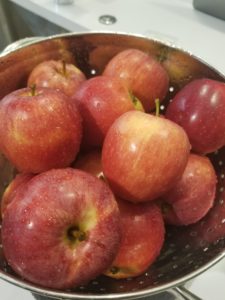
Everyone has their favorite fruit, or at least should. Some people go gaga for watermelon. Others say bananas are the best. Oranges may rank at the top for just about anyone. Me, I really can’t say I have a favorite. I know which ones I don’t care to consume unless they are presented in a interesting way, which would be melons and figs. Something about the mustiness flavor of both throws me off. But a few slices of watermelon with ricotta, cracked pepper and a drizzle of extra virgin olive oil is divine. A fig compote topped on a nicely grilled pork chop is a party in your mouth. Having the diverse palate that I have I swing from the strange, exotic stuff like say horned melon to the more basic items like strawberries. Oh wait that’s not a fruit technically.
Which leads me to this post. I don’t know if it’s being born and raised in New England or the fact that there are so many culinary ways of using them but apples place at the top of my favorites. I can’t even begin to to list how this humble group can transform an ordinary dish to something stellar. Not to mention if you find yourself at a farmers market they should have heirloom varieties that will fit any which way your mouth desires. Of course, an American tradition, especially this time of year, is Apple Pie. Now the recipe that follows is for canning the filling, saving that fall flavor for later in the winter. If you’re in dire need of a recipe for a pie that needs to go in the oven ASAP, message me and I’ll be happy to give you one. Otherwise, get out there, pick your own from a local farm, stop buy a booth at a farmer’s market, which may be ending this time of year, or head to grocery store to snag some. Just remember, don’t buy “Red Delicious” as they are never delicious and they are definitely not the apple of my eye.

APPLE PIE FILLING
- 5 #’s Apples
- 6 C water
- 1 1/2 C sugar
- 3 sticks Cinnamon
- 1 T freshly ground Nutmeg
- 3 T Corn Starch
- 3 T Citric Acid
- 1 t Salt
- juice of 1/2 Lemon
You’re going to want to start the “brine” before you start peeling the apples. Apples will brown quickly due to oxidation so peeling and slicing them should be the last step. Combine the water, sugar, cinnamon and nutmeg and bring to a boil. Reduce heat and simmer for 15 minutes. This will really help the aromatics infuse into the liquid. Mix the corn starch into just enough water to make it pourable. When the timer goes off, pour the slurry into the pot, whisk and bring back to a boil. Cook for a minute or two whisking to make sure there is no clumps and remove from heat.
Next up is peeling and cutting the apples. Firstly, combine the citric acid with the salt and lemon juice, if you can’t find citric acid, increase the amount of lemon juice to a whole lemon. If you feel good about using a paring knife to peel the apples, you should as the ribbon of skin will come in handy for the next recipe. If not, a regular peeler will work but save the skins of either! Don’t peel all the apples at once, do it in several batches to avoid them turning brown before being cut. In my experience, most everyone who’s eating apple pie is just happy to be eating apple pie and not looking to see how pretty it is between shoveling it down their throat. Add the apple to the citric and lemon, give them a gentle toss and repeat until apples are gone.

Split the apples between 3 quart jars, packing them in but not mushing the fruit. Any remaining pieces set aside for later. Pour the spiced liquid over the apples, remembering to leave enough head space. If you like, save any leftover liquid to make an alcoholic beverage with later. It would be an excellent mixer for a warmed whiskey drink but would also be fantastic thinned out with some hot water for a relaxing drink on a cold Autumn night.
Follow the general guidelines for canning for your altitude.
Now if you’re still reading this, thank you firstly and secondly, you deserve a bonus recipe. “Cabbage Stew” may not sound that sexy but it’s a really tasty dish. Not to mention it’s hearty, quick to make and freezes well for future use. So let’s get to it!
CABBAGE STEW
- 1 medium Yellow Onion, diced
- 3 Carrots, diced
- 2 stalks Celery, diced
- 4 cloves Garlic, sliced
- 1 medium to large head of Green Cabbage
- 28oz can diced tomatoes
- 3 T dried Oregano
- 2 T dried Parsley
- 2 Bay Leaves
- leftover apple pieces and skins
- 3 T olive oil
- water
- salt to taste

If you’re using leftover apple pieces, give a quick rinse to get off the citric acid & lemon juice. Over medium high heat in a large pot warm the olive oil in a large pot. Add the onion, carrot, celery and garlic and stir frequently for a few minutes. Add in a about a cup of water and bring mixture down to a simmer. Now I should say that if you’d like to use stock instead of water, feel free to but I would stay away from anything except vegetable stock as the flavors of others may not work with this stew. While your mirepoix is softening, cut your cabbage into quarters, removing only the thickest part of the stem. Using the slicer blade on the food processor, add each quarter. If your cabbage is especially large, there may need to be some more downsizing done to fit in the chute. In between each segment, shred a handful of apple peels and mix with the cabbage. Once this part is done add in the cabbage/apple mixture, apple pieces, tomatoes and herbs to the pot. Follow that with enough water (or stock) to cover the stew. You don’t want too much liquid as the cabbage is going to kick out some juice as it cooks and you can always add in more during the cooking process. Turn heat up and depending on how much time you have, or really how hungry you are, simmer or low boil until the cabbage is al dente. Serve with a nice piece of crusty bread and maybe a little bit of grated parmesan on top.
Salsa Verde & Slow Cooked Spicy Onions & Peppers
- At October 10, 2018
- By Sean Smith
- In Recipes, salsa, Tomatillo
 0
0
So today felt for the first time like a fall day. The sun was shining bright but had that slanted not so direct feel to it. It was warm but there was a brisk breeze blowing the leaves off the trees. I love this time of year but it is always bittersweet because I know the local farmers will soon be packing up their goods and won’t be seen again until spring. That said, there was a bumper crop of summer’s end peppers at the market. All kinds of sweet and hot peppers, running the gamut from green bell peppers to habañero. I, being the spicy fiend that I am, scooped up a ton of hot chillies. I also happened to come across some tomatillos which put a batch of Salsa Verde into motion. There are several ways of preparing this delicious sauce, you can grill the jalapeños and tomatillos, you can roast the garlic or you can keep it simple like my recipe does. In my opinion, simple is preferred because that way the Salsa Verde can be used for multiple dishes. With chips? Check. As a topping for roasted chicken? Check. Mixed into eggs for chilaquiles? Check and yes please!
SALSA VERDE
2 pounds tomatillos, peeled and washed
1 C chopped cilantro
5 cloves of garlic, smashed
1/4 cup fresh squeezed lime juice
16oz can of green chilies
Salt to taste
Combine tomatillos, cilantro, and garlic in a small pot. Barely cover with water and bring to a simmer. Cook until tomatillos have split their sides and transfer to a high powered blender.
Add in lime juice and pulse until chunky. Do not over-blend! Transfer to a mixing bowl and add chilies. Mix well to incorporate.
Now, a couple of side notes on this recipe. As I stated, this is keeping it easy peasey. Feel free to use this as a base and go from there. You can use canned chilies, or grill/roast your own! Poblanos would work well. Hatch would be where it’s at. The key part is not over pureeing that final product. It shouldn’t be chunky like a regular salsa but shouldn’t be smooth like say a tomato sauce.
I also was tasked with trying to help my mother-in-law who is an avid gardener, but sometimes grows things that she won’t necessarily consume. In this case it was jalapeños and anaheim peppers. So racking my brain trying to figure out how to tame the heat of those guys led me to create a recipe for those of us that like spicy and those of us that can only handle a little. Which led me to this…
SLOW COOKED SPICY ONIONS AND PEPPERS
2 Large Sweet Onions, julienned
2 Large Yellow Bell Peppers, julienned
6 Cloves Garlic, sliced
8-10 Jalapenos, seeded and rough chopped
3 Roasted Red Peppers, chopped
3 T Olive Oil
Salt to taste
In a medium sauce pan that has a lid that fits, heat olive oil over medium low heat. Add onions, bell peppers and garlic. Stir constantly to avoid getting any color. Once mixture begins to soften, reduce heat to low and cover. The lid I used has a setting to allow some moisture to escape, if yours doesn’t keep it slightly (!!) cracked. You want to keep the majority of moisture circulating in the pan. Stir the mixture frequently and when removing the lid, make sure the moisture that condensed on the lid drips back into the pan. Not only will that water help slow cook the veggies but now it’s infused with flavor. Cook for about 30 minutes, until the mixture has fully cooked down. The onions should be soft and stringy, the peppers should almost be mush. Add in jalapeños and roasted red peppers. Cook for another 15 minutes with the lid off, stirring frequently. You may have to add in a tablespoon of water here and there to make sure the mixture doesn’t brown. When most of the water from the additional peppers has cooked off, remove from heat and allow to cool to room temperature. Working in batches, add mixture to a food processor and pulse to a chunky consistency.
There are many ways to use this dish. You could smear it on bread as a little zesty snack, try adding some sharp cheddar for a mind bendingly good grilled cheese. As an additional condiment for Taco Tuesday. Or use it like a bouillon cube and add it in for a base to a soup or sauce. Really the world’s your oyster, or in this case your chili!
~Chef Sean
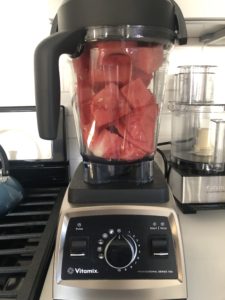

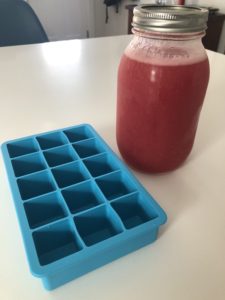

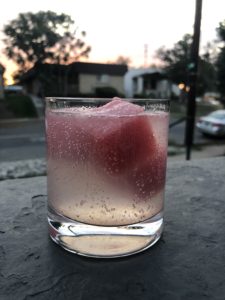
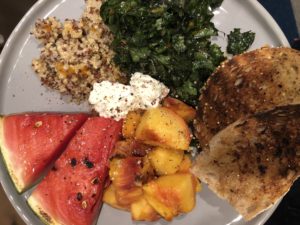



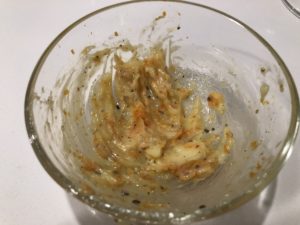
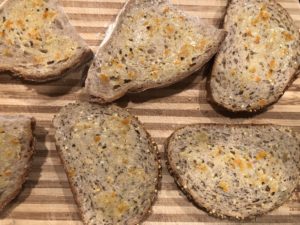
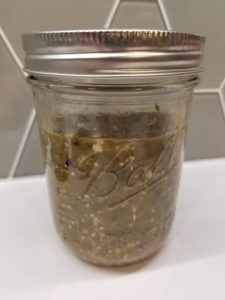
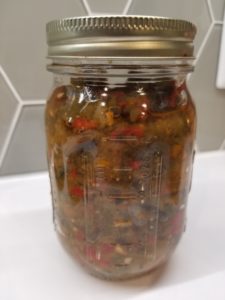
Let’s get Social